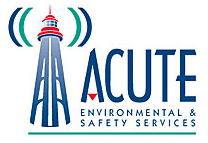Managing conflict and complaints in any workplace keeps everyone, from workers to clients to supervisors, safe, content, and satisfied with their jobs. Oftentimes, workplaces can be hostile or unhealthy for employees due to a variety of reasons and the employer may not be aware. Learning how to write a formal complaint letter about a coworker can be a useful tool in difficult work environments.
If you are having trouble with a coworker and are wondering what steps to take, be sure to document your situation, confront the person, and, should none of this work, proceed to write a formal complaint letter. The first step is understanding what a hostile work situation is, what merits a formal complaint, and then how to handle the situation.
Read on to learn:
- When To Write A Formal Complaint Letter About A Coworker
- 4 Warning Signs Of A Hostile Work Environment
- Steps To Writing A Formal Complaint Letter
- Sample Letters
If you are facing a hostile work environment and still have questions or concerns after reading this article, please contact our consulting team here at ACUTE. Contact the experts at ACUTE today to learn more about their consulting services for workplace violence and harassment and see how they can help you and your workplace today. A safe working environment requires everyone to be on board.
Download a FREE template for writing a formal complaint letter
Simply enter your email address to download your sample letter that you can personalize to fit your situation.
By entering your email, you are giving permission to be added to our semi-monthly newsletter to receive helpful information on workplace safety topics. You can unsubscribe to this newsletter at any time.

When To Write A Formal Complaint Letter About A Coworker
Before we get to “how” it’s important to start with “when”. When should you resort to writing a formal complaint letter? There are two steps you should take before writing a letter: documenting and confronting.
However, before any of that, it’s important to know if the situation requires this kind of addressing. Here is a list of questions to ask yourself before proceeding with formal a complaint:
1. Is my work environment hostile?
A hostile work environment is one where a colleague’s actions, communication, or behaviour make doing your job impossible. The behaviour that creates a hostile environment must be discriminatory in nature. In Ontario, this is regulated by the Ontario Human Rights Commission, which provides guidance on addressing harassment or discrimination based on protected grounds such as race, sex, sexual orientation, disability, and gender identity.
Employers are expected to investigate complaints promptly and implement corrective measures when necessary to ensure a fair and respectful workplace. Failing to address reports of harassment could potentially expose an organization to legal liability and damage its reputation.

Behaviour that creates a hostile environment must be discriminatory in nature.
2. Are my rights being attacked or discriminated against?
3. Is this problem severely affecting my work?
Are you crying at your desk? Is this problem preventing you from getting your work done? If the answer is yes, you should consider confronting the issue or seeking help immediately.
Sometimes, simply voicing your concerns to the offending party, if it’s safe to do so, can resolve misunderstandings and create space for discussion. However, if someone touches you, threatens you, or exhibits any dangerous or harassing behaviours, go to Human Resources right away.
Document the incident and be prepared to share any relevant details, such as dates, times, and witnesses. Taking swift, proactive steps not only protects you but also helps maintain a healthy work environment for everyone.

If someone exhibits any dangerous or harassing behaviours, go to Human Resources right away.
4 Warning Signs Of A Hostile Work Environment
1. Discrimination
2. Sexual Harassment
If you have experienced sexual harassment check out the #metoo movement for support. Check out the TIME Magazine cover article on the Silence Breakers here.

Sexual harassment includes any form of inappropriate behavior which has sexual connotations.
3. Intimidation
4. Poor Facilities

Not providing the right equipment can create a physically hostile environment.
Steps To Writing A Formal Complaint Letter
1. Always try to resolve the conflict amicably before proceeding to a formal complaint letter.
2. Write down the details of the harassment.
our letter will be going to the human resources manager or department (depending on the size of your organization), and you will want to provide them with as much information as possible to facilitate their investigation. Be sure to include:
- A clear description of the issue: Detail the incidents that occurred, including specific dates, times, and locations.
- Names of individuals involved: Identify the person or people whose behaviour has caused the issue, along with any witnesses who may have observed the incidents.
- How the behaviour has affected you: Explain how the situation has impacted your ability to perform your job, your emotional well-being, or your sense of safety at work.
- Steps you’ve already taken: Note whether you’ve attempted to address the issue directly with the individual or through other means.
- A request for action: Clearly state what resolution or actions you are seeking, such as an investigation, mediation, or disciplinary measures.
Keep your tone professional and factual, avoiding overly emotional language, to ensure your concerns are taken seriously and addressed promptly.

Your letter should include the date, time, and location of the incident.
3. Format your letter professionally.
4. Introduce yourself and your purpose.
5. Include details about the facts of the harassment.
When writing your complaint letter, it’s essential to be clear and provide adequate information to ensure the human resources manager can identify the problem and understand the need for further investigation. Here are key tips for structuring the details:
- Describe the incidents in detail: Outline each specific occurrence, including dates, times, and locations. For example, “On [date], at approximately [time], in [location], [Name of individual] made the following comment…”
- Include every occurrence: If the behaviour was ongoing, list each incident separately to show a pattern or establish the severity of the issue.
- Stick to the facts: Avoid making assumptions or drawing conclusions about the motives or intentions behind the actions. Focus on what was said or done and how it impacted you.
- Be objective: Refrain from using emotional language or generalizations such as “they always” or “everyone knows.” Instead, provide concrete examples that can be investigated.
For instance:
“On [date], during a team meeting, [Name] made the following remark: ‘[Quote].’ This comment was directed at me and made me feel [describe how it made you feel, such as uncomfortable or disrespected], affecting my ability to focus on the discussion.”
By presenting your concerns factually and systematically, you increase the likelihood that your complaint will be taken seriously and addressed appropriately.

Your letter should describe the incidents in detail.
6. Explain how you responded.
7. Propose a solution.
In the final section of your complaint letter, clearly state the outcome you hope to achieve. While HR may not implement your exact suggestions, expressing your desired resolution helps guide their response and shows that you are proactively seeking a fair solution. For example:
- If you want an investigation:
“I respectfully request that a formal investigation be conducted into the incidents I have described. I believe this will help bring clarity to the situation and ensure accountability.” - If you want to be transferred:
“Given the ongoing challenges and the impact on my work environment, I would like to request a transfer to a different department or team, if possible.” - If you want specific actions taken:
“I would like to see clear steps taken to address this behaviour, including appropriate disciplinary measures and training for all staff on workplace harassment policies.” - If you need additional support:
“I also request access to any resources the company may offer, such as counseling or mediation services, to help me navigate this situation.”
By proposing a solution, you show that you are focused on resolving the issue constructively, ensuring that both your needs and the organization’s workplace standards are met.
8. Sign and send your letter.
Be sure to make and keep a copy for your records of both your letter and supporting documentation.

You should keep a copy of your letter for your own records.
Sample Letters
Stay Safe At Work With ACUTE!

Hands-on, practical consulting is the best way to keep employers and workers safe in the workplace! Check out ACUTE consulting services here to learn more about internal relations consulting. ACUTE is dedicated to workplace safety and understands the importance of diffusing hostile situations. If you have questions about the legislation and how this will impact your workplace, get in touch with ACUTE today. Why get workplace safety training with ACUTE? Here are just some of the benefits of working with ACUTE.

- Open Door Instructor-Student Partnership – ACUTE’s training services emphasize client participation. Staff foster relationships with clients and serve as a touchstone for advice anytime moving forward.
- Serving Your Team and Industry – With a vast array of clients in the manufacturing, construction, health, academic, and government sectors, ACUTE brings the best safety practices from across the spectrum to your workplace.
- 100 Years Combined Experience – ACUTE provides comprehensive health and safety training, on-site safety services, and consulting services. With over 100 years of combined experience, our company staff offer more than theoretical or abstract ideas. ACUTE offers solutions.
- Track Record of Success – ACUTE is rated 4.9/5 stars on Google reviews, demonstrating a commitment to our clients, quality, and passion for training.
“We have relied on ACUTE for years to train our staff and
keep them safe on the job site.”
– Bob, Millwrighting Company
Click here to see what training courses we have at ACUTE or contact us today for quality training in your workplace or on-site at ACUTE’s proven training facilities!
ACUTE is located in Waterloo, Ontario, and services customers from cities such as Toronto, Mississauga, Brampton, Hamilton, Milton, Kitchener, London, Guelph, and others across Ontario.

